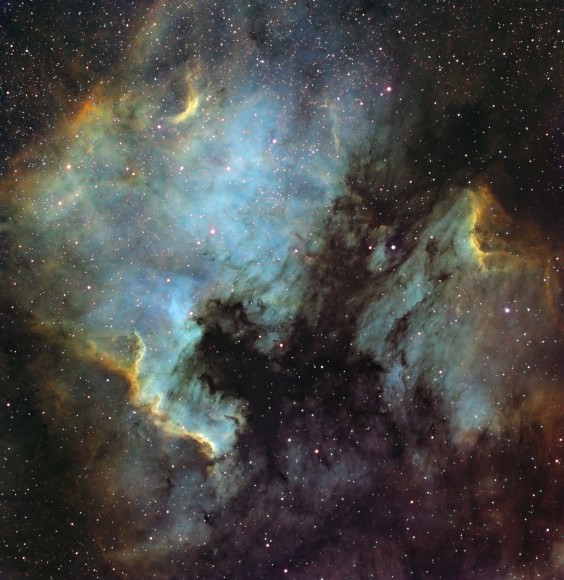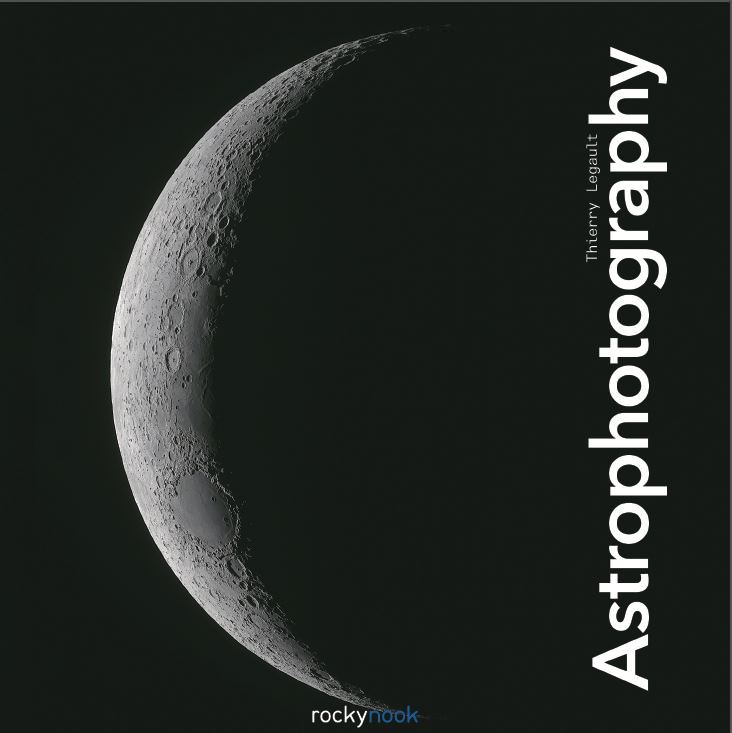If you’re looking for detailed, step-by-step instructions of how to start or improve your photography of astronomical objects, look no further. Astrophotographer Thierry Legault shares the expertise he has garnered from over 20 years of “amateur” photography in his newly translated book titled simply — and appropriately — “Astrophotography.”
“It took me more than two years to write the first edition of the book (published in French in 2006),” Legault told Universe Today, “and I worked several months on the second edition (2013), and worked several months again for this new English edition.”
This softcover book is filled with dramatic images, helpful graphs, charts, and more – plus over 100,000 words of text to provide detailed, guided instructions on everything from choosing the right camera for your needs to how to process imagery for the best and most accurate results.
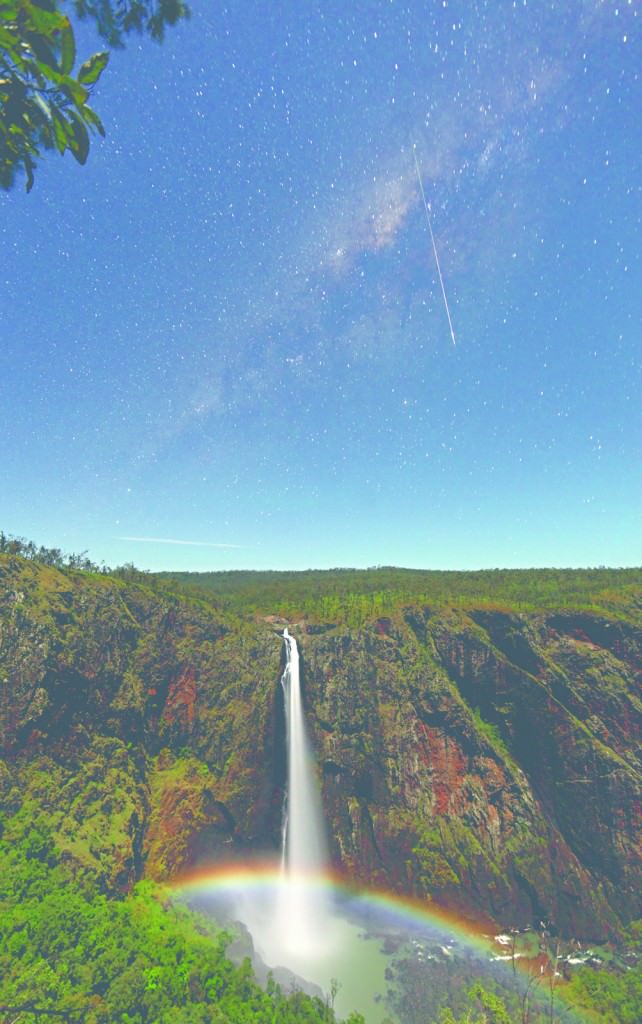
100% of the astronomical images in the book are Legault’s own photos, just a few of which are featured here in this review. “I really wanted to use my own images,” Legault said.
While each page is a treasure trove of Legault’s beautiful images, he’s not just showing off: he tells you how you can try to get the same results.
Of course, we’ve featured Legault’s stunning and sometimes ground-breaking astrophotography here on Universe Today, and his work has been published and broadcast worldwide. You’ll likely recall images of the space shuttle or International Space Station crossing the Sun or Moon, views of spy satellites in orbit, beautiful deep sky views, or shots like the striking image above of a ‘moonbow’ and meteor over Australia’s Wallaman Falls.
His continued dedication to his craft, along with his attention to detail and quality has earned Legault the reputation as one of the top amateur astrophotographers in the world. And he now shares his tips and know-how in this well-organized and detailed — but highly accessible — manual. Legault’s descriptions and instructions will not lose even those just beginning with astronomical imaging.
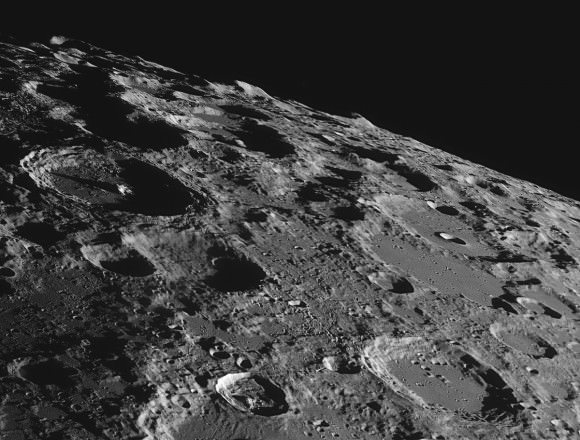
So, with experts like Legault and so many other accomplished astrophotographers taking incredible photos (which we love to feature on Universe Today) why would someone want to bother with trying to just start out and learn the craft?
Legault addresses that question immediately in the forward of his book.
“Part of the answer to that question lies in the desire to get our own pictures of the stars: after all most of the tourists who visit the Egyptian pyramids, Niagara Falls, or The Great Wall of China also take photographs, even though these sites have already been photographed millions of times with beautiful tomes devoted to them,” Legault writes. “The pleasure of photographing the sky is a natural progression from the visual observations of the night sky…”
Plus, Legault continues, with current equipment that is now available, the expanding avenues of citizen science offers the chance for anyone to add to the body of astronomical knowledge.
“It is entirely possible to go beyond the purely aesthetic aspect of astrophography and use images of celestial bodies to study their behavior and deduce the physical mechanisms that govern them, or even reveal new insights,” Legault writes. “In some cases, advanced amateurs can do useful work assisting professionals who, while certainly having more sophisticated means and deeper skills are s0 few that it is impossible for them to perform a complete survey of a a celestial object to to continuously monitor it.”
So not only can you create beautiful imagery but you can contribute to science as well.
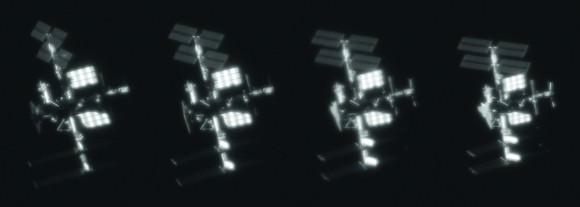
The book begins with the simplest ways for amateurs to begin photographing the night sky, and you don’t even need to own a telescope. For example, Legault’s video, below, of fireworks and a big Moon over Paris is something anyone can record. But using the right settings — and planning ahead — are key to capturing beautiful images and video.
But then Legault delves into the details of telescopic photography, and provides information on using telescopes and tracking mounts. He shares how to precisely capture everything from incredible solar imagery, to deep sky photos, to his ‘trademark’ transits of satellites, like those seen below:
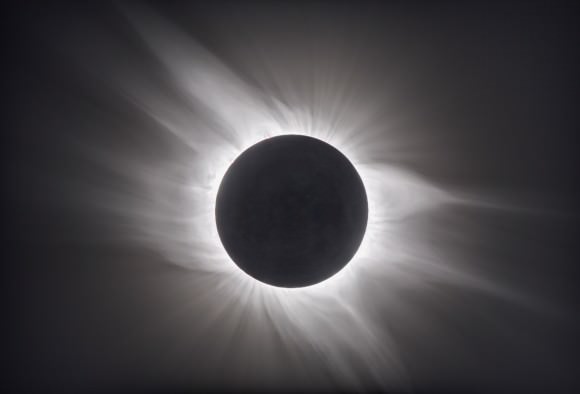
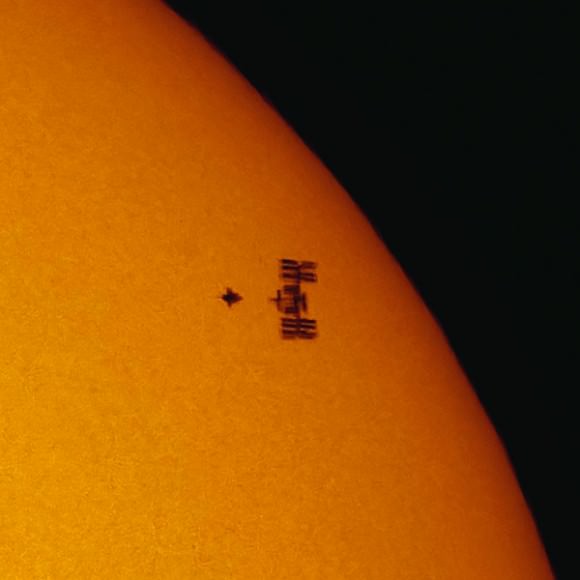
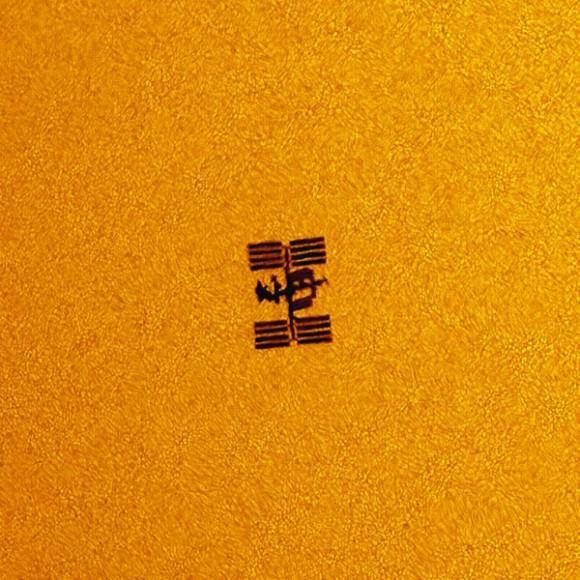
Also key is image processing. While Legault has provided details for Universe Today before on how not to over-process and be fooled by image artifacts, his book offers much more thorough information on how to start — as well as knowing when to quit — processing images for the best results.
Other areas Legault covers are how to:
- Select the most useful equipment: cameras, adapters, filters, focal reducers/extenders, field correctors, and guide telescopes
- Set up your camera (digital, video, or CCD) and your lens or telescope for optimal results
- Plan your observing sessions
- Polar-align your equatorial mount and improve tracking for pin-point star images
- Make celestial time-lapse videos
- Calculate the shooting parameters: focal length and ratio, field of view, exposure time, etc.
- Combine multiples exposures to reveal faint galaxies, nebulae details, elusive planetary structures, and tiny lunar craters
- Postprocess your images to fix defects such as vignetting, dust shadows, hot pixels, uneven background, and noise
- Identify problems with your images and improve your results
“Astrophotography” is not just a dry manual: Legault tells stories and explains details in a manner that seems like he is talking directly to you. For a translated book, the text flows extremely well, making for a very readable book. Legault credits Alan Holmes from the Santa Barbara Instruments Group (SBIG) – one of the main manufacturers of CCD cameras for astronomy — for his assitance with the translation from French. “He did a tremendous job of correcting my bad translation!” Legault told UT.
“Astrophotography” is available on Amazon in a large format book or as a Kindle edition for those who might like to have a lit version while out in the field. It is also available at book retailers like Barnes and Noble and Shop Indie bookstores. This English version of “Astrophotography” was published by Rocky Nook Publishing, a leader in books on photography. You can also purchase the book directly from Rocky Nook.
For additional imagery and information, visit Legualt’s website.
